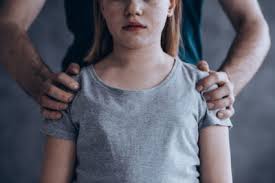Institutional Child Abuse
Institutional child abuse is one of the most devastating forms of maltreatment because it occurs in places specifically designed to care for, educate, or protect children. When abuse happens within schools, churches, orphanages, sports academies, foster homes, or juvenile detention centers, it represents not only individual harm—but a deep betrayal of trust. These institutions often hold power, authority, and community respect, making it easier for abuse to go unnoticed, unreported, or deliberately concealed.
What Is Institutional Child Abuse?
Institutional child abuse occurs when a child experiences physical, emotional, sexual, or psychological harm within an organization responsible for their safety. This abuse may involve:
- Staff members (teachers, clergy, caretakers, coaches)
- Peers (other children or older youth)
- Systemic failures that enable neglect, exploitation, or cover-ups
Unlike individual abuse in private homes, institutional abuse is often enabled by power structures, weak oversight, and a culture of silence.
Types of Abuse Within Institutions
Institutional abuse can take many forms:
1. Sexual Abuse
Includes grooming, coercion, assault, or exploitation by adults in positions of authority. Many high-profile scandals in religious institutions and sports organizations fall under this category.
2. Physical Abuse
Unjustified force, harsh punishment, or unsafe conditions leading to injury. This can occur in schools, boarding homes, detention facilities, or residential care.
3. Emotional and Psychological Abuse
Humiliation, threats, extreme discipline, manipulation, or neglect of emotional needs—often normalized in authoritarian environments.
4. Neglect
Failing to meet basic needs such as:
- Food
- Hygiene
- Medical care
- Safety
- Education
- Emotional support
Overcrowded homes and undertrained staff frequently contribute to this.
Why Institutional Abuse Is So Difficult to Detect
Institutional child abuse often remains hidden for years due to several factors:
Power Imbalance
Children are taught to obey adults in authority, making it difficult to question or report abusive behavior.
Fear of Retaliation
Victims may fear punishment, shame, or being removed from the institution if they speak up.
Culture of Silence
Organizations sometimes prioritize their reputation over child safety, discouraging complaints or covering up incidents.
Lack of Transparency
Many institutions operate behind closed doors with little external oversight.
Systemic Failures
Poor staff training, inadequate reporting mechanisms, and lack of supervision allow abuse to continue undetected.
High-Risk Environments
Some settings are more vulnerable to institutional abuse than others, including:
- Boarding schools
- Orphanages and group homes
- Foster care systems
- Juvenile detention centers
- Religious institutions
- Sports academies and youth programs
- Residential treatment facilities
Children in these environments rely entirely on adults for care, making them especially susceptible.
How Institutional Abuse Affects Survivors
The trauma from institutional abuse can be profound and long-lasting. Survivors may experience:
- PTSD or complex trauma
- Depression, anxiety, and suicidal thoughts
- Difficulty trusting authority figures
- Identity confusion and low self-esteem
- Social and relationship struggles
- Long-term fear of institutions or structured environments
The betrayal by trusted adults often makes healing more difficult.
Why Institutional Abuse Is a Systemic Issue
Institutional abuse is rarely the result of a single offender. It often reflects:
- Poor hiring practices
- Lack of background checks
- Inadequate supervision
- Failure to enforce child protection policies
- Organizational denial or cover-ups
- Limited reporting avenues for children
Real reform requires addressing the system—not just the individuals involved.
Protecting Children: What Institutions Must Do
To prevent abuse, institutions should implement strong child safeguarding policies, such as:
1. Mandatory Background Checks
Thorough screening of all employees and volunteers.
2. Staff Training
Educating workers on recognizing and responding to abuse.
3. Transparent Reporting Mechanisms
Anonymous reporting tools and mandatory reporting laws for staff.
4. Regular Audits and Inspections
External oversight helps identify red flags early.
5. Clear Codes of Conduct
Strict rules that define boundaries and unacceptable behavior.
6. Child-Centered Practices
Ensuring children understand their rights and know how to seek help safely.
The Role of Governments and Communities
Stronger legislation, oversight bodies, and child protection services are essential. Communities must support survivors, hold institutions accountable, and advocate for transparency.
Institutional child abuse represents one of the greatest betrayals a child can endure. When trusted spaces become sites of harm, the emotional and psychological impact can last a lifetime. Preventing institutional abuse requires continuous vigilance, strong policies, and a culture that prioritizes child safety above all else. By acknowledging past failures and enforcing meaningful reform, society can build institutions that truly protect and empower children.


Leave a Reply